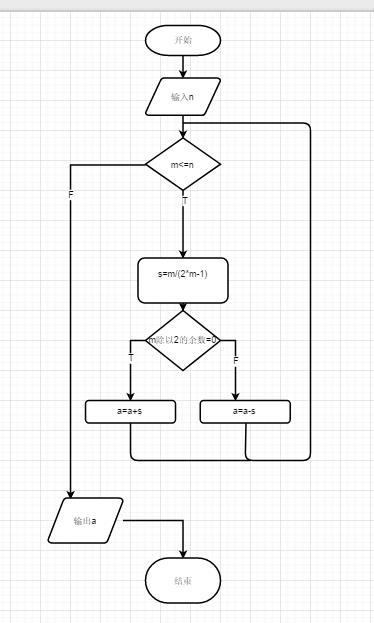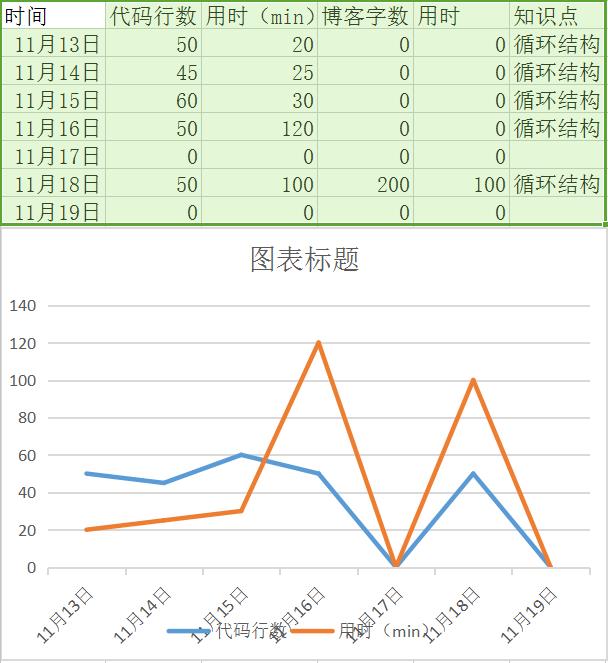Python数据分析第七周作业随笔记录
Posted balalalalalalala
tags:
篇首语:本文由小常识网(cha138.com)小编为大家整理,主要介绍了Python数据分析第七周作业随笔记录相关的知识,希望对你有一定的参考价值。
电商产品评论数据情感分析
代码1:评论去重的代码
# 代码12-1 评论去重的代码 import pandas as pd import re import jieba.posseg as psg import numpy as np # 去重,去除完全重复的数据 reviews = pd.read_csv("D:\\\\360MoveData\\\\Users\\\\86130\\\\Documents\\\\Tencent Files\\\\2268756693\\\\FileRecv\\\\reviews.csv") reviews = reviews[[\'content\', \'content_type\']].drop_duplicates() content = reviews[\'content\']
代码2:数据清洗
# 代码12-2 数据清洗 # 去除去除英文、数字等 # 由于评论主要为京东美的电热水器的评论,因此去除这些词语 strinfo = re.compile(\'[0-9a-zA-Z]|京东|美的|电热水器|热水器|\') content = content.apply(lambda x: strinfo.sub(\'\', x))
代码3:分词、词性标注、去除停用词代码
# 代码12-3 分词、词性标注、去除停用词代码 import numpy as np # 分词 worker = lambda s: [(x.word, x.flag) for x in psg.cut(s)] # 自定义简单分词函数 seg_word = content.apply(worker) # 将词语转为数据框形式,一列是词,一列是词语所在的句子ID,最后一列是词语在该句子的位置 n_word = seg_word.apply(lambda x: len(x)) # 每一评论中词的个数 n_content = [[x+1]*y for x,y in zip(list(seg_word.index), list(n_word))] index_content = sum(n_content, []) # 将嵌套的列表展开,作为词所在评论的id seg_word = sum(seg_word, []) word = [x[0] for x in seg_word] # 词 nature = [x[1] for x in seg_word] # 词性 content_type = [[x]*y for x,y in zip(list(reviews[\'content_type\']), list(n_word))] content_type = sum(content_type, []) # 评论类型 result = pd.DataFrame("index_content":index_content, "word":word, "nature":nature, "content_type":content_type) # 删除标点符号 result = result[result[\'nature\'] != \'x\'] # x表示标点符号 # 删除停用词 stop_path = open("D:\\\\360MoveData\\\\Users\\\\86130\\\\Documents\\\\Tencent Files\\\\2268756693\\\\FileRecv\\\\stoplist.txt", \'r\',encoding=\'UTF-8\') stop = stop_path.readlines() stop = [x.replace(\'\\n\', \'\') for x in stop] word = list(set(word) - set(stop)) result = result[result[\'word\'].isin(word)] # 构造各词在对应评论的位置列 n_word = list(result.groupby(by = [\'index_content\'])[\'index_content\'].count()) index_word = [list(np.arange(0, y)) for y in n_word] index_word = sum(index_word, []) # 表示词语在改评论的位置 # 合并评论id,评论中词的id,词,词性,评论类型 result[\'index_word\'] = index_word
代码4:提取含有名词的评论
# 代码12-4 提取含有名词的评论 # 提取含有名词类的评论 ind = result[[\'n\' in x for x in result[\'nature\']]][\'index_content\'].unique() result = result[[x in ind for x in result[\'index_content\']]]
代码5:绘制词云
# 代码12-5 绘制词云 import matplotlib.pyplot as plt from wordcloud import WordCloud frequencies = result.groupby(by = [\'word\'])[\'word\'].count() frequencies = frequencies.sort_values(ascending = False) backgroud_Image=plt.imread("D:\\\\360MoveData\\\\Users\\\\86130\\\\Documents\\\\Tencent Files\\\\2268756693\\\\FileRecv\\\\pl.jpg") wordcloud = WordCloud(font_path="C:\\\\Windows\\\\Fonts\\\\STZHONGS.ttf", max_words=100, background_color=\'white\', mask=backgroud_Image) my_wordcloud = wordcloud.fit_words(frequencies) plt.imshow(my_wordcloud) plt.axis(\'off\') plt.rcParams[\'font.sans-serif\'] = [\'SimHei\'] # 添加这条可以让图形显示中文 plt.title(\'This is a Title(学号 3110)\') plt.show() # 将结果写出 result.to_csv("D:\\\\360MoveData\\\\Users\\\\86130\\\\Documents\\\\Tencent Files\\\\2268756693\\\\FileRecv\\\\word.csv", index = False, encoding = \'utf-8\')

代码6:匹配情感词
# 代码12-6 匹配情感词 import pandas as pd import numpy as np word = pd.read_csv("D:\\\\360MoveData\\\\Users\\\\86130\\\\Documents\\\\Tencent Files\\\\2268756693\\\\FileRecv\\\\word.csv") # 读入正面、负面情感评价词 pos_comment = pd.read_csv("D:\\\\360MoveData\\\\Users\\\\86130\\\\Documents\\\\Tencent Files\\\\2268756693\\\\FileRecv\\\\正面评价词语(中文).txt", header=None,sep="\\n", encoding = \'utf-8\', engine=\'python\') neg_comment = pd.read_csv("D:\\\\360MoveData\\\\Users\\\\86130\\\\Documents\\\\Tencent Files\\\\2268756693\\\\FileRecv\\\\负面评价词语(中文).txt", header=None,sep="\\n", encoding = \'utf-8\', engine=\'python\') pos_emotion = pd.read_csv("D:\\\\360MoveData\\\\Users\\\\86130\\\\Documents\\\\Tencent Files\\\\2268756693\\\\FileRecv\\\\正面情感词语(中文).txt", header=None,sep="\\n", encoding = \'utf-8\', engine=\'python\') neg_emotion = pd.read_csv("D:\\\\360MoveData\\\\Users\\\\86130\\\\Documents\\\\Tencent Files\\\\2268756693\\\\FileRecv\\\\负面情感词语(中文).txt", header=None,sep="\\n", encoding = \'utf-8\', engine=\'python\') # 合并情感词与评价词 positive = set(pos_comment.iloc[:,0])|set(pos_emotion.iloc[:,0]) negative = set(neg_comment.iloc[:,0])|set(neg_emotion.iloc[:,0]) intersection = positive&negative # 正负面情感词表中相同的词语 positive = list(positive - intersection) negative = list(negative - intersection) positive = pd.DataFrame("word":positive, "weight":[1]*len(positive)) negative = pd.DataFrame("word":negative, "weight":[-1]*len(negative)) posneg = positive.append(negative) # 将分词结果与正负面情感词表合并,定位情感词 data_posneg = posneg.merge(word, left_on = \'word\', right_on = \'word\', how = \'right\') data_posneg = data_posneg.sort_values(by = [\'index_content\',\'index_word\'])
代码7:修正情感倾向
# 代码12-7 修正情感倾向 # 根据情感词前时候有否定词或双层否定词对情感值进行修正 # 载入否定词表 notdict = pd.read_csv("D:\\\\360MoveData\\\\Users\\\\86130\\\\Documents\\\\Tencent Files\\\\2268756693\\\\FileRecv\\\\not.csv") # 处理否定修饰词 data_posneg[\'amend_weight\'] = data_posneg[\'weight\'] # 构造新列,作为经过否定词修正后的情感值 data_posneg[\'id\'] = np.arange(0, len(data_posneg)) only_inclination = data_posneg.dropna() # 只保留有情感值的词语 only_inclination.index = np.arange(0, len(only_inclination)) index = only_inclination[\'id\'] for i in np.arange(0, len(only_inclination)): review = data_posneg[data_posneg[\'index_content\'] == only_inclination[\'index_content\'][i]] # 提取第i个情感词所在的评论 review.index = np.arange(0, len(review)) affective = only_inclination[\'index_word\'][i] # 第i个情感值在该文档的位置 if affective == 1: ne = sum([i in notdict[\'term\'] for i in review[\'word\'][affective - 1]]) if ne == 1: data_posneg[\'amend_weight\'][index[i]] = -\\ data_posneg[\'weight\'][index[i]] elif affective > 1: ne = sum([i in notdict[\'term\'] for i in review[\'word\'][[affective - 1, affective - 2]]]) if ne == 1: data_posneg[\'amend_weight\'][index[i]] = -\\ data_posneg[\'weight\'][index[i]] # 更新只保留情感值的数据 only_inclination = only_inclination.dropna() # 计算每条评论的情感值 emotional_value = only_inclination.groupby([\'index_content\'], as_index=False)[\'amend_weight\'].sum() # 去除情感值为0的评论 emotional_value = emotional_value[emotional_value[\'amend_weight\'] != 0]
代码8:查看情感分析效果
# 代码12-8 查看情感分析效果 # 给情感值大于0的赋予评论类型(content_type)为pos,小于0的为neg emotional_value[\'a_type\'] = \'\' emotional_value[\'a_type\'][emotional_value[\'amend_weight\'] > 0] = \'pos\' emotional_value[\'a_type\'][emotional_value[\'amend_weight\'] < 0] = \'neg\' # 查看情感分析结果 result = emotional_value.merge(word, left_on = \'index_content\', right_on = \'index_content\', how = \'left\') result = result[[\'index_content\',\'content_type\', \'a_type\']].drop_duplicates() confusion_matrix = pd.crosstab(result[\'content_type\'], result[\'a_type\'], margins=True) # 制作交叉表 (confusion_matrix.iat[0,0] + confusion_matrix.iat[1,1])/confusion_matrix.iat[2,2] # 提取正负面评论信息 ind_pos = list(emotional_value[emotional_value[\'a_type\'] == \'pos\'][\'index_content\']) ind_neg = list(emotional_value[emotional_value[\'a_type\'] == \'neg\'][\'index_content\']) posdata = word[[i in ind_pos for i in word[\'index_content\']]] negdata = word[[i in ind_neg for i in word[\'index_content\']]] # 绘制词云 import matplotlib.pyplot as plt from wordcloud import WordCloud # 正面情感词词云 freq_pos = posdata.groupby(by = [\'word\'])[\'word\'].count() freq_pos = freq_pos.sort_values(ascending = False) backgroud_Image=plt.imread("D:\\\\360MoveData\\\\Users\\\\86130\\\\Documents\\\\Tencent Files\\\\2268756693\\\\FileRecv\\\\pl.jpg") wordcloud = WordCloud(font_path="C:\\\\Windows\\\\Fonts\\\\STZHONGS.ttf", max_words=100, background_color=\'white\', mask=backgroud_Image) pos_wordcloud = wordcloud.fit_words(freq_pos) plt.imshow(pos_wordcloud) plt.rcParams[\'font.sans-serif\'] = [\'SimHei\'] # 添加这条可以让图形显示中文 plt.title(\'This is a Title(学号 3110)\') plt.axis(\'off\') plt.show() # 负面情感词词云 freq_neg = negdata.groupby(by = [\'word\'])[\'word\'].count() freq_neg = freq_neg.sort_values(ascending = False) neg_wordcloud = wordcloud.fit_words(freq_neg) plt.imshow(neg_wordcloud) plt.rcParams[\'font.sans-serif\'] = [\'SimHei\'] # 添加这条可以让图形显示中文 plt.title(\'This is a Title(学号 3110)\') plt.axis(\'off\') plt.show() # 将结果写出,每条评论作为一行 posdata.to_csv("D:\\\\360MoveData\\\\Users\\\\86130\\\\Documents\\\\Tencent Files\\\\2268756693\\\\FileRecv\\\\posdata.csv", index = False, encoding = \'utf-8\') negdata.to_csv("D:\\\\360MoveData\\\\Users\\\\86130\\\\Documents\\\\Tencent Files\\\\2268756693\\\\FileRecv\\\\negdata.csv", index = False, encoding = \'utf-8\')


代码9:建立词典及语料库
# 代码12-9 建立词典及语料库 import pandas as pd import numpy as np import re import itertools import matplotlib.pyplot as plt # 载入情感分析后的数据 posdata = pd.read_csv("D:\\\\360MoveData\\\\Users\\\\86130\\\\Documents\\\\Tencent Files\\\\2268756693\\\\FileRecv\\\\posdata.csv", encoding = \'utf-8\') negdata = pd.read_csv("D:\\\\360MoveData\\\\Users\\\\86130\\\\Documents\\\\Tencent Files\\\\2268756693\\\\FileRecv\\\\negdata.csv", encoding = \'utf-8\') from gensim import corpora, models # 建立词典 pos_dict = corpora.Dictionary([[i] for i in posdata[\'word\']]) # 正面 neg_dict = corpora.Dictionary([[i] for i in negdata[\'word\']]) # 负面 # 建立语料库 pos_corpus = [pos_dict.doc2bow(j) for j in [[i] for i in posdata[\'word\']]] # 正面 neg_corpus = [neg_dict.doc2bow(j) for j in [[i] for i in negdata[\'word\']]] # 负面
代码10:主题数寻优
# 代码12-10 主题数寻优 # 构造主题数寻优函数 def cos(vector1, vector2): # 余弦相似度函数 dot_product = 0.0; normA = 0.0; normB = 0.0; for a,b in zip(vector1, vector2): dot_product += a*b normA += a**2 normB += b**2 if normA == 0.0 or normB==0.0: return(None) else: return(dot_product / ((normA*normB)**0.5)) # 主题数寻优 def lda_k(x_corpus, x_dict): # 初始化平均余弦相似度 mean_similarity = [] mean_similarity.append(1) # 循环生成主题并计算主题间相似度 for i in np.arange(2,11): lda = models.LdaModel(x_corpus, num_topics = i, id2word = x_dict) # LDA模型训练 for j in np.arange(i): term = lda.show_topics(num_words = 50) # 提取各主题词 top_word = [] for k in np.arange(i): top_word.append([\'\'.join(re.findall(\'"(.*)"\',i)) \\ for i in term[k][1].split(\'+\')]) # 列出所有词 # 构造词频向量 word = sum(top_word,[]) # 列出所有的词 unique_word = set(word) # 去除重复的词 # 构造主题词列表,行表示主题号,列表示各主题词 mat = [] for j in np.arange(i): top_w = top_word[j] mat.append(tuple([top_w.count(k) for k in unique_word])) p = list(itertools.permutations(list(np.arange(i)),2)) l = len(p) top_similarity = [0] for w in np.arange(l): vector1 = mat[p[w][0]] vector2 = mat[p[w][1]] top_similarity.append(cos(vector1, vector2)) # 计算平均余弦相似度 mean_similarity.append(sum(top_similarity)/l) return(mean_similarity) # 计算主题平均余弦相似度 pos_k = lda_k(pos_corpus, pos_dict) neg_k = lda_k(neg_corpus, neg_dict) # 绘制主题平均余弦相似度图形 from matplotlib.font_manager import FontProperties font = FontProperties(size=14) #解决中文显示问题 plt.rcParams[\'font.sans-serif\']=[\'SimHei\'] plt.rcParams[\'axes.unicode_minus\'] = False fig = plt.figure(figsize=(10,8)) ax1 = fig.add_subplot(211) ax1.plot(pos_k) ax1.set_xlabel(\'(学号 3110)正面评论LDA主题数寻优\', fontproperties=font) ax2 = fig.add_subplot(212) ax2.plot(neg_k) ax2.set_xlabel(\'(学号 3110)负面评论LDA主题数寻优\', fontproperties=font)

代码11:LDA主题分析
# 代码12-11 LDA主题分析 # LDA主题分析 pos_lda = models.LdaModel(pos_corpus, num_topics = 3, id2word = pos_dict) neg_lda = models.LdaModel(neg_corpus, num_topics = 3, id2word = neg_dict) pos_lda.print_topics(num_words = 10) neg_lda.print_topics(num_words = 10)
[(0, \'0.124*"安装" + 0.031*"垃圾" + 0.031*"师傅" + 0.018*"小时" + 0.017*"不好" + 0.017*"打电话" + 0.016*"加热" + 0.015*"烧水" + 0.015*"太慢" + 0.012*"坑人"\'), (1, \'0.033*"太" + 0.031*"差" + 0.027*"安装费" + 0.020*"收" + 0.016*"漏水" + 0.014*"人员" + 0.014*"真的" + 0.013*"坑" + 0.012*"服务" + 0.012*"高"\'), (2, \'0.030*"售后" + 0.021*"东西" + 0.020*"客服" + 0.019*"装" + 0.017*"收费" + 0.017*"贵" + 0.016*"慢" + 0.011*"产品" + 0.011*"上门" + 0.010*"评"\')]
第七周作业
第一题
#include <stdio.h> int main() { int n,m=1; double a=0; scanf("%d",&n); while(n>=m) { double s=m/(double)(2*m-1); if(m%2==0) s=-s; a=a+s; m=m+1; } printf("%.3lf",a); }
思路:
第一步:输入项数n
第二步:定义分母与分子,并记录项数
第三步:判断每项的正负
第四步:求和
第五步:判断项数与n的大小
第六步:输出和
第七步:结束
流程图;

问题;
刚开始定义的是float,显示的是结果错误,改用double后才正确。
第二题
#include <stdio.h> int main() { int a,b=1,c; float d=0; c=0; scanf("%d",&a); while(b<=a) { int n; scanf("%d",&n); d=d+n; if(n>=60) c=c+1; b=b+1; } d=d/a; if(a==0) d=0; printf("average = %.1f\\n",d); printf("count = %d",c); }
思路;
第一步:输入学生人数
第二步:利用循环输入学生成绩
第三步:计算学生成绩之和
第四步:判断学生成绩是否及格,若及格则记录及格人数加1
第五步;结束循环,利用学生成绩总和与人数计算平均成绩
第六步:输出平均成绩,及格人数
第七步;结束
流程图:

错误;刚开始没有在while外面输入一次成绩,循环无法执行
git地址:https://git.coding.net/jike1liuyu/diqizhouzuoye.git

在本周的学习之中我认识到了在循环中要注意判断的使用,若直接在循环中利用判读进行计算可能会导致计算错误,因为循环使得一个数被多次计算。
应该重设一个变量,使得判断计算可以跳出循环后再计算。
难点是循环和判断的混合使用和循环套循环的使用

史泽文;http://www.cnblogs.com/shilcz/p/7856505.html
以上是关于Python数据分析第七周作业随笔记录的主要内容,如果未能解决你的问题,请参考以下文章
马哥2016全新Linux+Python高端运维班第七周作业
马哥2016全新Linux+Python高端运维班第七周作业